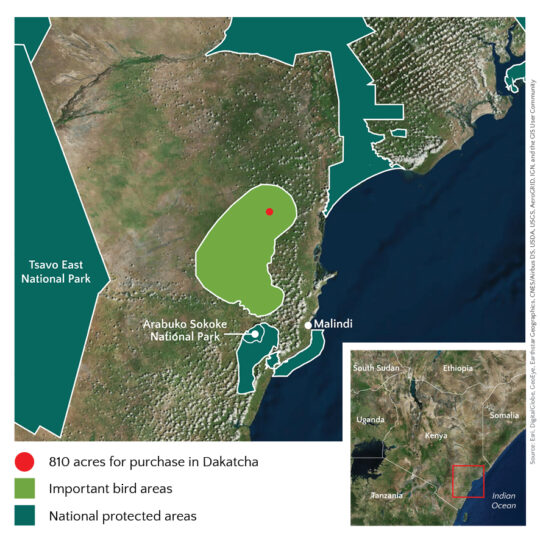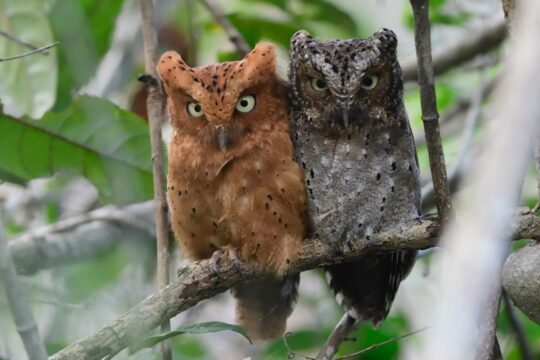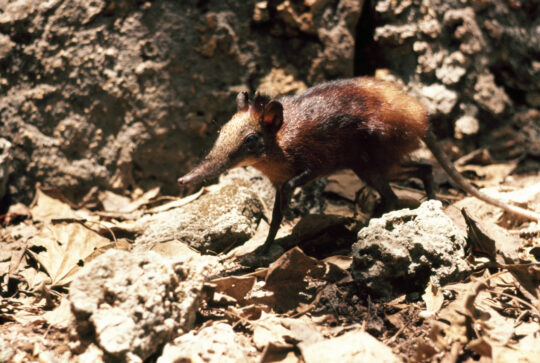Saving Kenya’s Coastal Forests
World Land Trust (WLT) is pleased to announce that we have reached the target to save 810 acres of Kenya’s threatened coastal forest. Dakatcha Woodland is home to endangered species like the Clarke’s Weaver, Sokoke Scops Owl and Golden-rumped Elephant Shrew.
If we lost Dakatcha, we would tip these, and some of Africa’s other ‘small wonders’, towards extinction. Dakatcha urgently needed protection. Illegal charcoal production, hunting, uncontrolled pineapple farming and the constant threat of deforestation could have seen this rare, vulnerable habitat go up in smoke. You helped us save Dakatcha before it’s too late.
10 REASONS TO SAVE DAKATCHA
1. Precious but unprotected. Dakatcha is home to globally threatened species
2. The world’s only known nesting site of the endangered Clarke’s Weaver is found here
3. The endangered Sokoke Scops Owl and Sokoke Pipit rely on this internationally recognised Important Bird Area
4. European migrants, like the Golden Oriole, overwinter in the forest
5. Dakatcha is a haven for rare mammals like the Golden-rumped Elephant Shrew
6. Local communities rely on Dakatcha for food and other resources
7. Dakatcha’s trees, shrubs and herbs are a rich source of traditional medicines
8. The wooded hills are a vital water catchment for surrounding farmland
9. Every healthy, intact forest we can save helps us in the fight against climate change
10. A little-known forest haven, Dakatcha’s new species are waiting to be discovered

PUTTING DAKATCHA ON THE MAP
Perched on rolling hills above the coastal town of Malindi on Kenya’s north coast, the beautiful, spreading trees and thickets of Dakatcha represent the most northerly forest of its kind in Africa. A vital refuge for endangered species, Dakatcha has been identified as a Key Biodiversity Area (KBA) and Important Bird Area (IBA), but it currently has no official protection. Under the ownership of Nature Kenya, however, the future of this precious habitat can be secured – for the wildlife and local people that depend on it.
Click here for a printable PDF with information about this project.

Meet some of Dakatcha’s endangered species
The future of one of the world’s rarest birds – Clarke’s Weaver (Ploceus golandi) – is hanging in the balance. Its only known nesting site was discovered in seasonal wetlands deep in Dakatcha as recently as 2013. Less than 2,000 pairs are thought to exist – small wonder that this strikingly-coloured bird and master nest-builder is officially listed as Endangered.

Sokoke Scops Owl Just 18cm in length, this small charismatic owl roosts by day in the lower canopy of Dakatcha’s woodland. It occurs in both grey and rufous-coloured variations. Endemic to the coastal forests of Kenya and Northeast Tanzania, it is particularly vulnerable to deforestation and habitat loss.

Golden-rumped Elephant Shrew More closely related to African Elephants than shrews, this rabbit-sized mammal is renowned for its long, flexible snout – perfect for probing the forest floor in search of earthworms and beetles. Another victim of habitat loss, the Golden-Rumped Elephant Shrew (or Sengi) is also threatened by hunting. Dakatcha could become its last stronghold.
DID YOU KNOW?
The Golden-rumped Elephant Shrew has a commensal relationship with Red-capped Robin-chat. The birds follow the elephant shrews through the forest, feeding on any insects they disturb and leave behind.